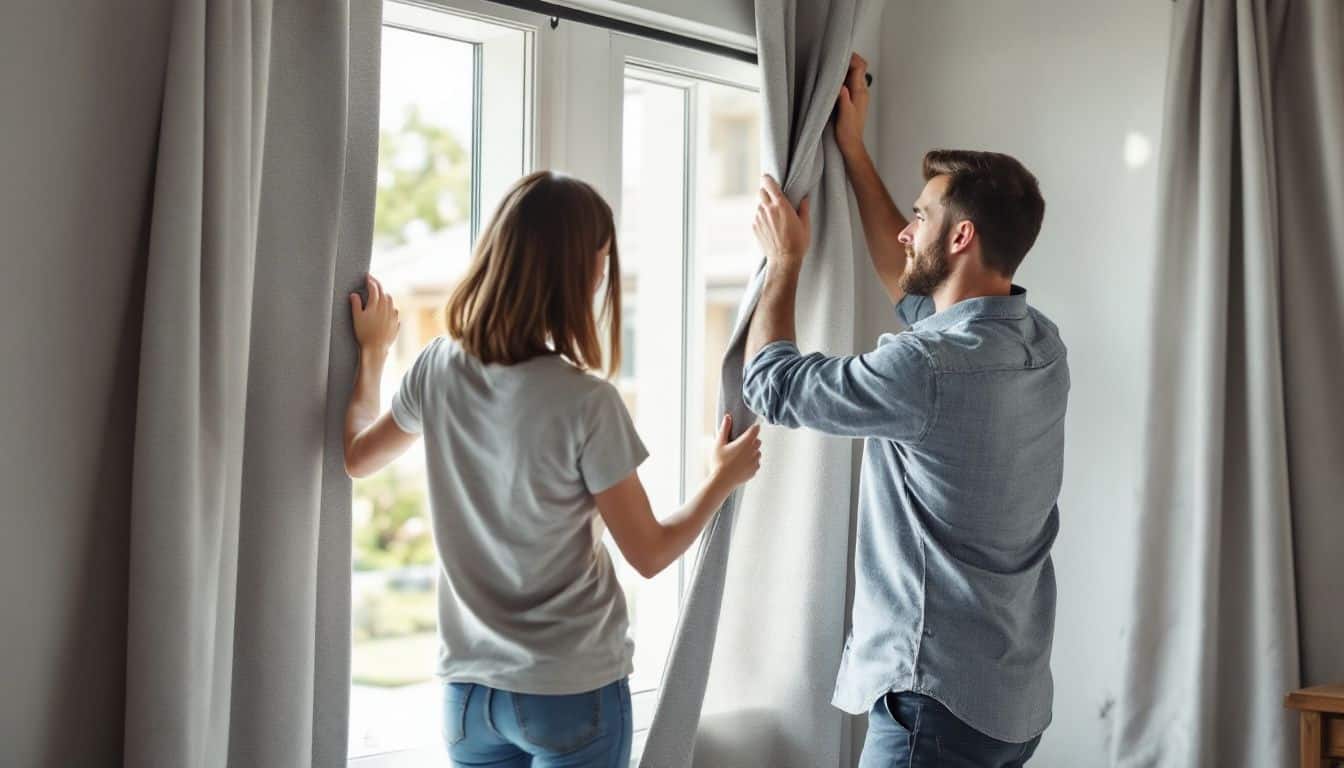Is your house too noisy? You’re not alone in asking, “how do I make my house quieter?” Windows and doors let in 90% of outside noise, turning your peaceful home into a noisy mess. I’ll show you eight simple steps to block unwanted sounds and create your perfect quiet zone.
Get ready to transform your home into a peaceful haven.
Key Takeaways
Windows and doors let in 90% of outside noise, but solid-core doors can cut noise by up to 50 decibels. These doors cost around $2,800 but offer lasting quiet.
Double-glazed windows reduce outside noise by 50% and cost about $1,800. They use special materials like polyvinyl butyral to block up to 40 decibels of sound.
Quality carpet with padding can reduce noise levels by more than 20 decibels. White noise machines help people fall asleep 40% faster and work well for babies.
Strategic furniture placement helps block noise. Put sofas against shared walls and bookshelves near noisy areas. Heavy curtains and acoustic panels trap sound waves.
Sound-dampening insulation inside walls creates a strong noise barrier. Combine this with door sweeps and weatherstripping for maximum soundproofing.
Table of Contents
Identify Sources of Noise
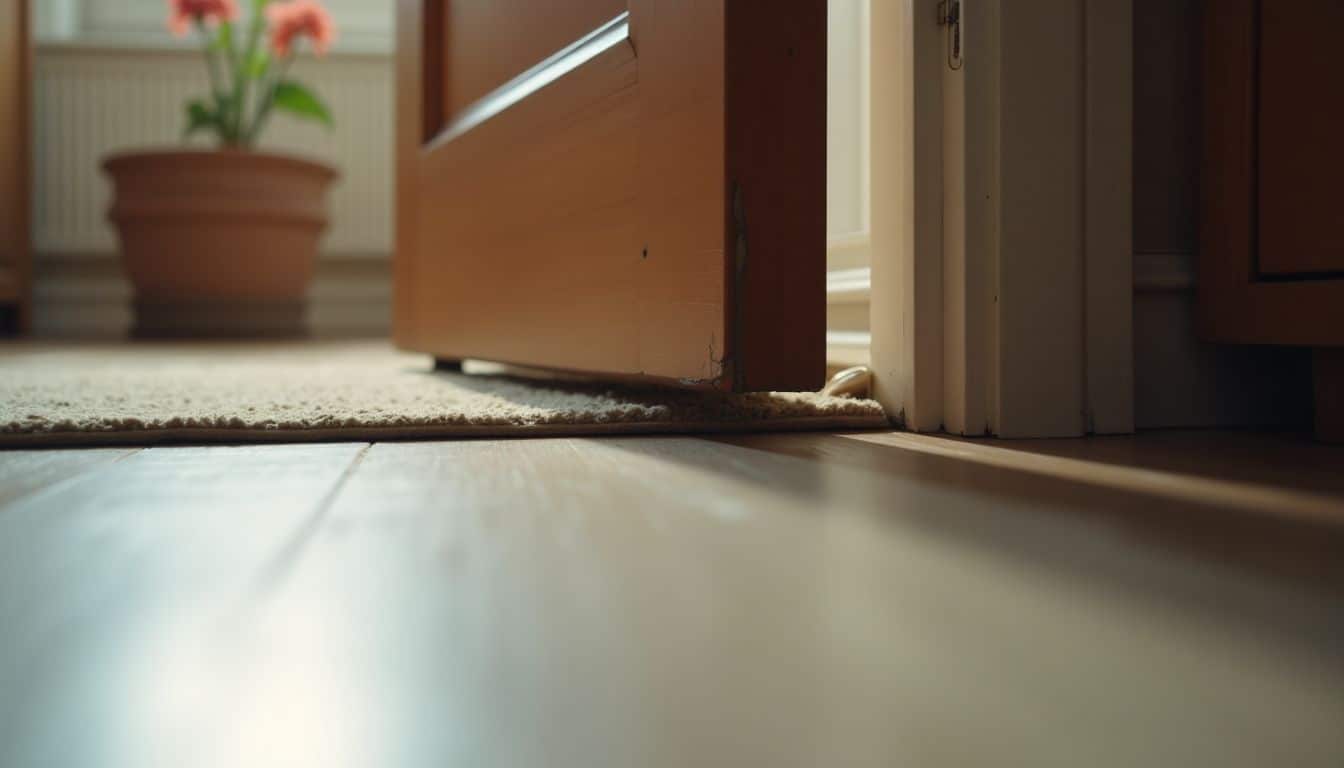
Finding noise sources in your home starts with a simple walk-through. Listen closely for sounds from air vents, heating ducts, and gaps near windows or doors. Your neighbors’ daily activities, traffic noise, and outdoor equipment can sneak through these spots.
I discovered this in my own home when I noticed how much street noise came through a tiny crack under my front door.
The quieter you become, the more you can hear.
Sound travels in sneaky ways through your house’s weak spots. Those pesky sounds often slip through airbricks, chimneys, and ventilation shafts without you noticing. Thin walls and ceilings let noise pass right through, while loose floorboards create annoying creaks.
Most homes have these issues, but fixing them starts with spotting where the noise comes from. My tip? Stand quietly in each room for a minute – you’ll be amazed at what you hear.
Soundproofing Doors
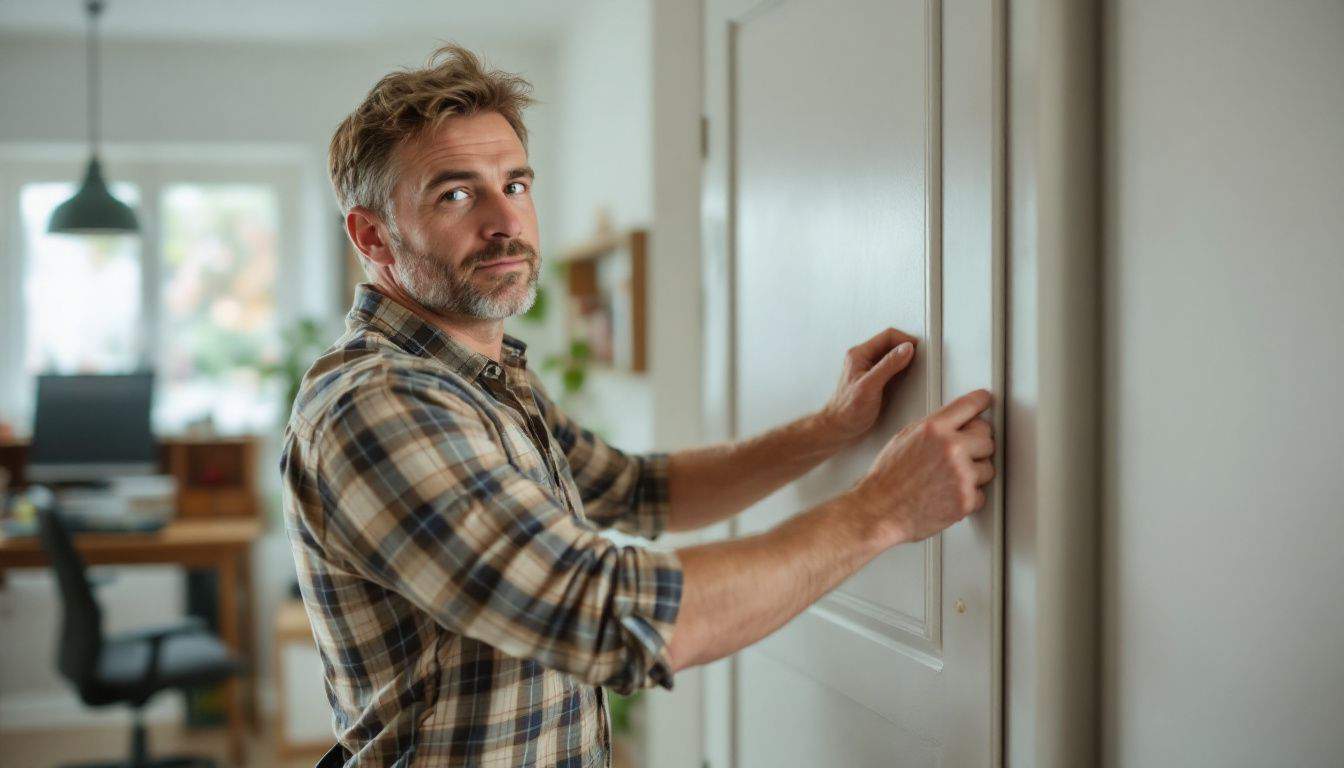
Doors act like gateways for unwanted noise to sneak into your home. A solid-core door with proper weather stripping will block more sound than a hollow one, making your space feel like a peaceful retreat.
Install solid-core doors
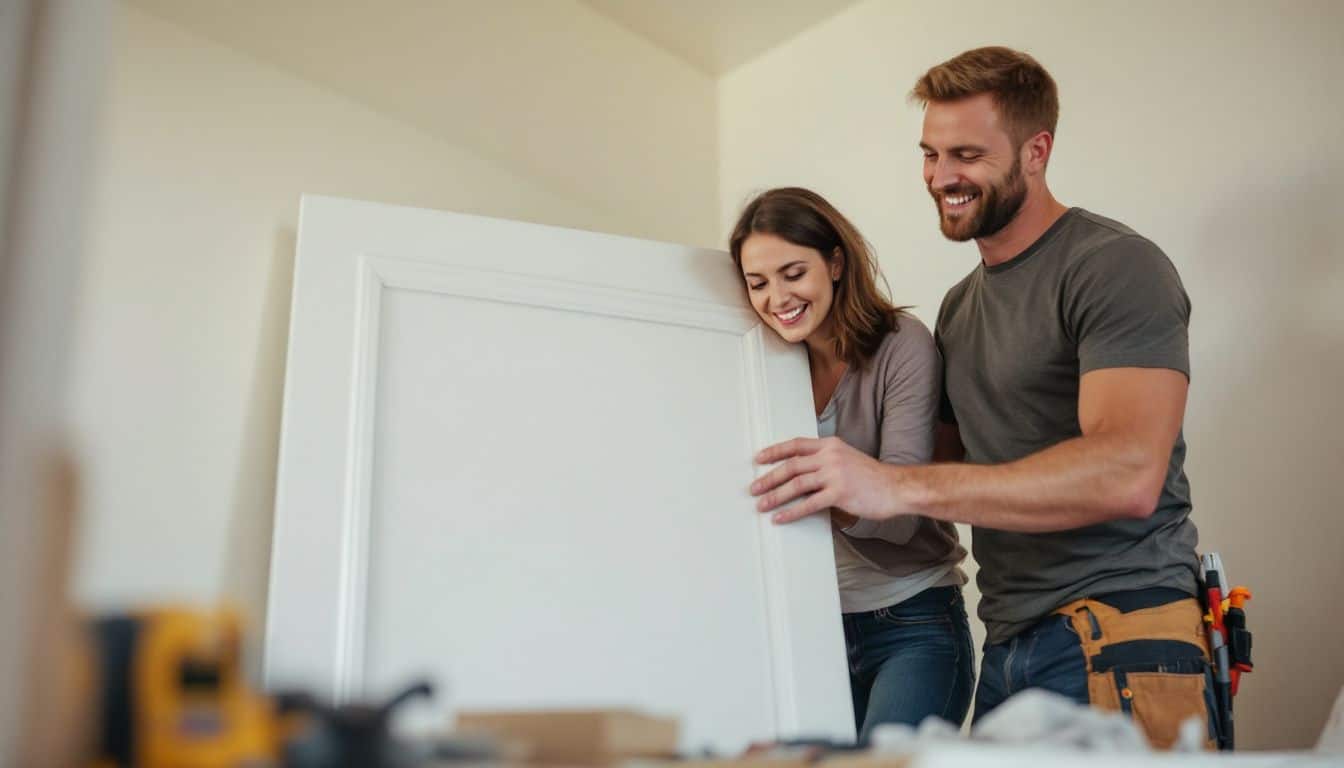
Solid-core doors pack a serious punch against noise. I replaced my hollow doors with solid ones last month, and the difference amazed me. These sturdy doors cut noise by up to 50 decibels, making them perfect for creating peaceful spaces at home.
The secret lies in their dense construction – they’re filled with wood or other sound dampening materials instead of air. Most small internal doors offer sound reduction values between 25 to 35 decibels, but solid-core options hit the higher end of this range.
The price tag starts around $2,800, but the investment pays off in peace and quiet. My bedroom now feels like an acoustic sanctuary thanks to the solid-core door. Mass loaded vinyl adds extra sound blocking power to these doors.
The extra weight helps block more sound waves from passing through. Sound insulation works best with proper installation and weatherstripping to seal any gaps. A professional installation ensures maximum noise reduction benefits from your new solid-core door.
Add door sweeps and weatherstripping
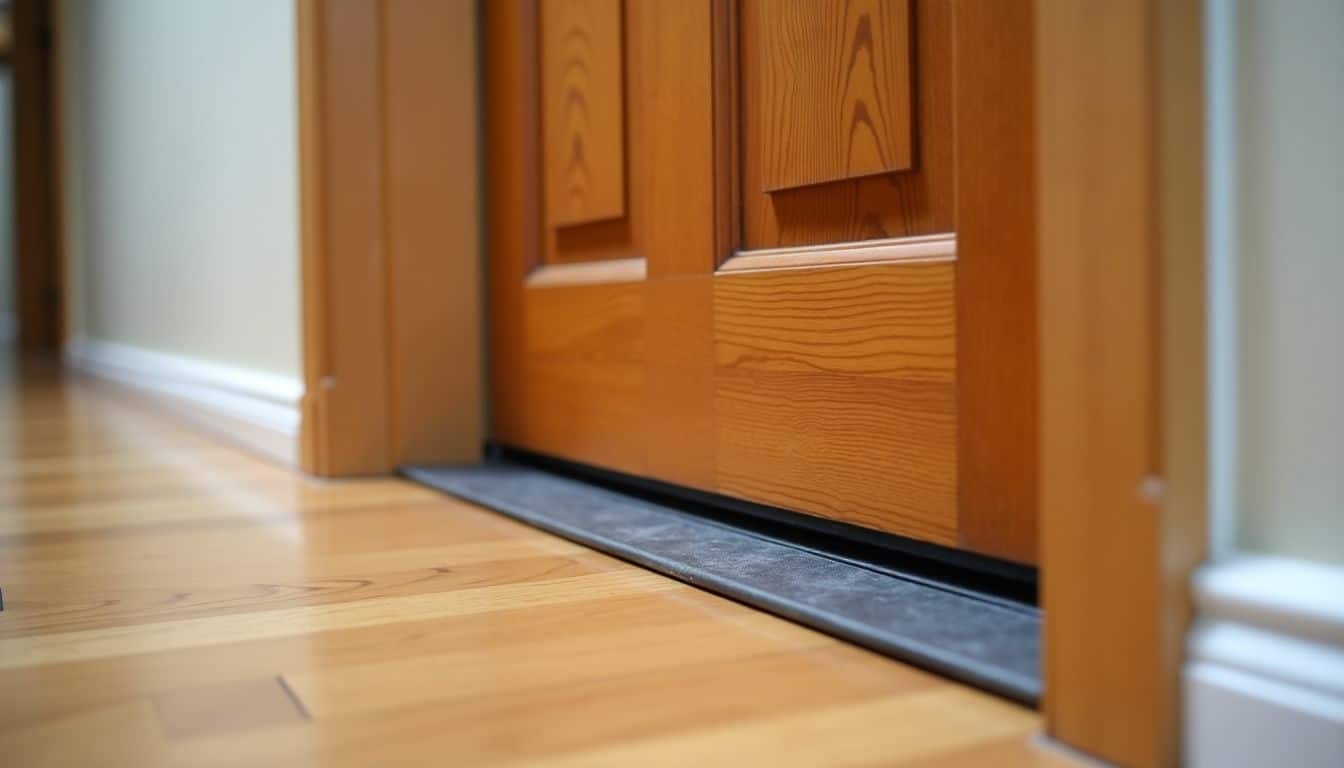
A solid-core door needs proper sealing to reach its full soundproofing potential. Door sweeps and weatherstripping work together as your noise-blocking dream team. Door sweeps block sound waves that try to sneak under your door, while weatherstripping seals the sides and top edges.
These simple tools create an airtight barrier that keeps unwanted noise where it belongs – outside your space.
The smallest gap can let in the biggest noise. – Home Acoustics Expert
The magic happens in the details of proper installation. Door sweeps attach to the bottom of your door with screws, creating a tight seal against your floor. Weatherstripping sticks to your door frame with strong adhesive, filling those pesky gaps around the edges.
Both pieces work like a cozy blanket wrapped around your door, stopping sound in its tracks. The best part? You can install these sound-dampening heroes yourself with basic tools from any hardware store.
Soundproofing Walls
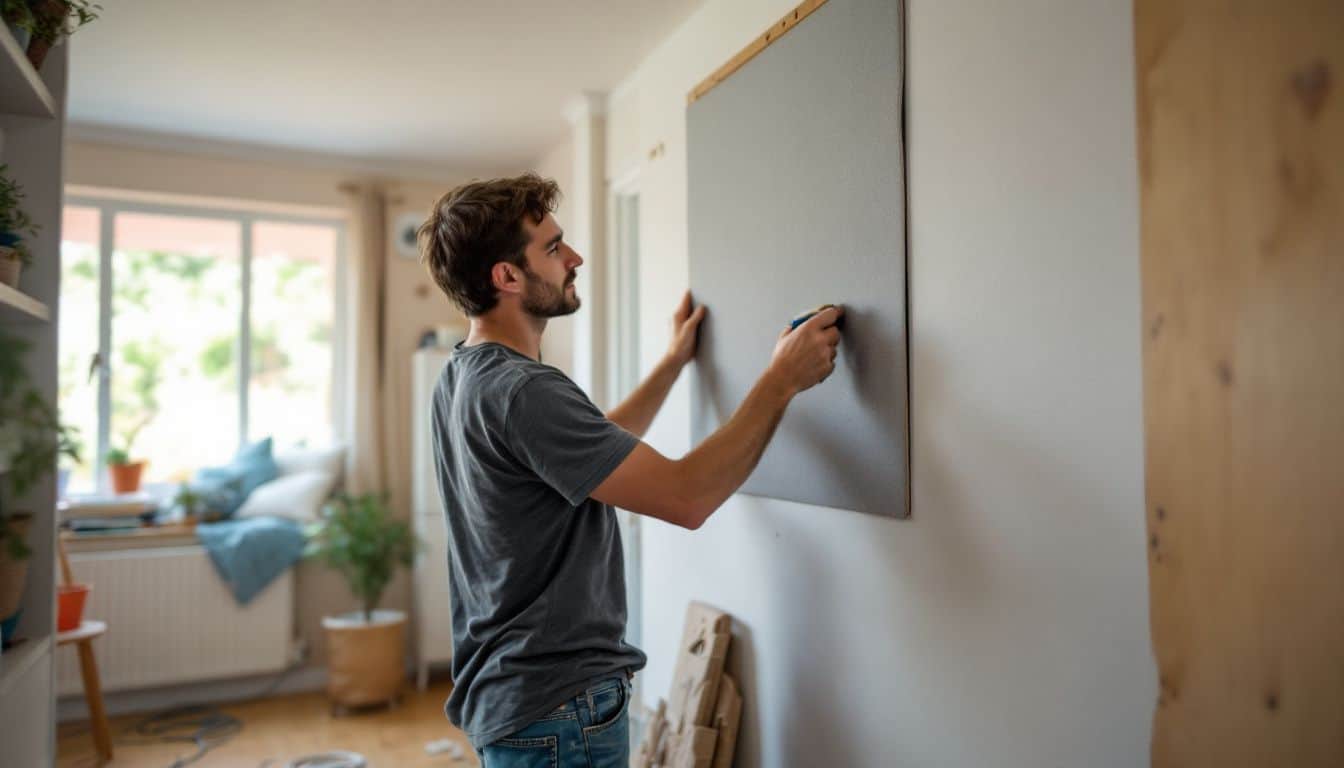
Walls act as the biggest sound conductors in your home, but you can fix that with smart solutions. You’ll need to combine acoustic panels with sound-dampening insulation to create a solid barrier against unwanted noise.
Add acoustic panels
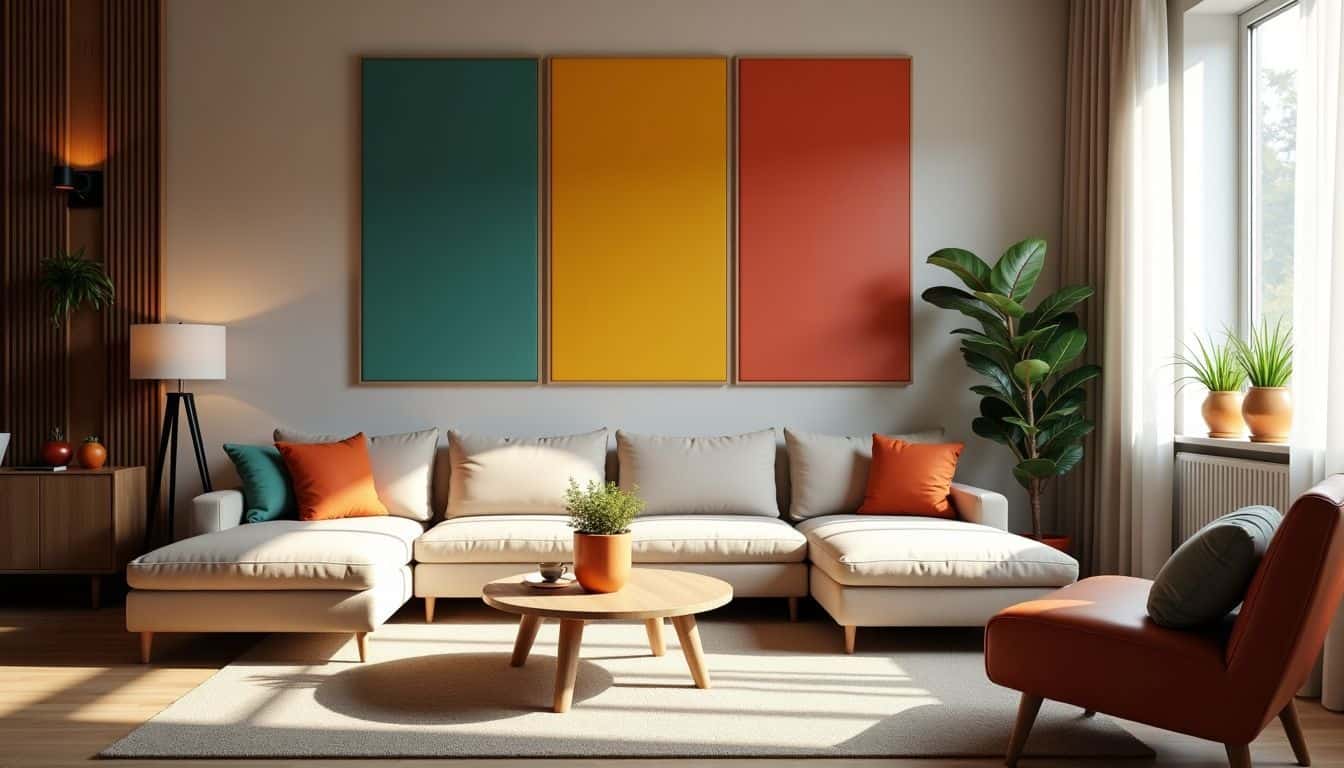 Acoustic panels work like magic to trap unwanted noise in your home. I installed these sound-absorbing beauties between the rails of my soundproofing system last month, and the difference was amazing.
Acoustic panels work like magic to trap unwanted noise in your home. I installed these sound-absorbing beauties between the rails of my soundproofing system last month, and the difference was amazing.
These panels come in various sizes and colors, making them perfect for people with auditory sensitivity.
The key lies in placing them strategically on your walls where sound bounces most.
My living room needed extra care, so I filled every gap with sound-dampening insulation. The acoustic panels gave me an easy fix without major construction work. You’ll love how these panels blend with your home decor while fighting noise pollution.
Next up, let’s explore how double-glazed windows can boost your home’s quiet factor.
Use sound-dampening insulation
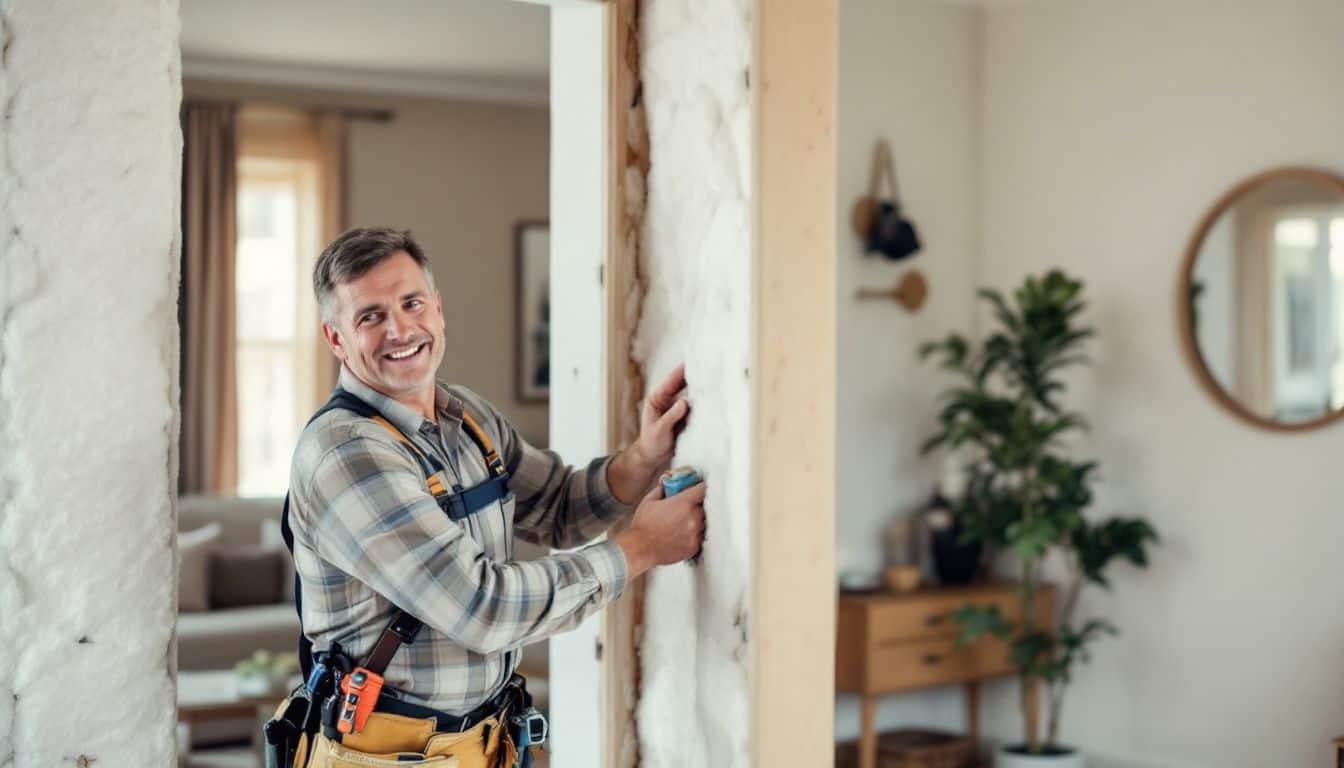
Acoustic panels work great, but sound-dampening insulation takes your soundproofing to the next level. Sound insulation fits right inside your walls, creating a powerful barrier against unwanted noise.
I learned this firsthand during my home renovation last summer. The process starts by removing your existing drywall to access the wall cavity.
The right insulation doesn’t just block noise – it transforms your home into a peaceful sanctuary.
Fiberglass insulation serves as the perfect sound blocker within your walls. This mineral wool material traps sound waves and stops them from bouncing around your space. My contractor filled every wall cavity with thick layers of fiberglass before attaching new drywall.
The results amazed me – my noisy street became whisper-quiet inside. The best part? This home insulation pulls double duty by keeping your house warm in winter and cool in summer. Many homeowners skip this step because it seems tough, but the peace and quiet make it worth the effort.
Soundproofing Windows
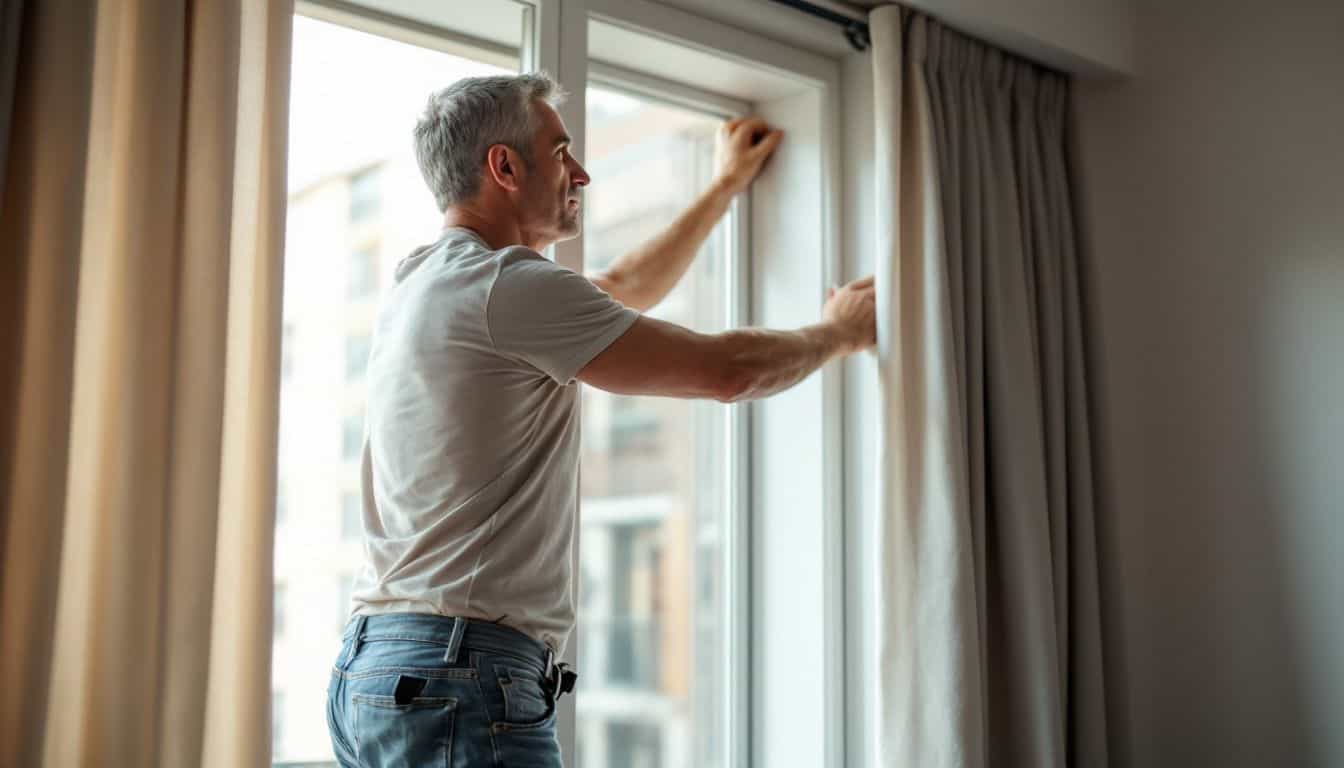
Windows let in more noise than any other part of your house, but you can fix that. Double-glazed windows create a sound barrier that blocks street noise, while thick curtains absorb echoes and vibrations from the outside world.
Install double-glazed windows
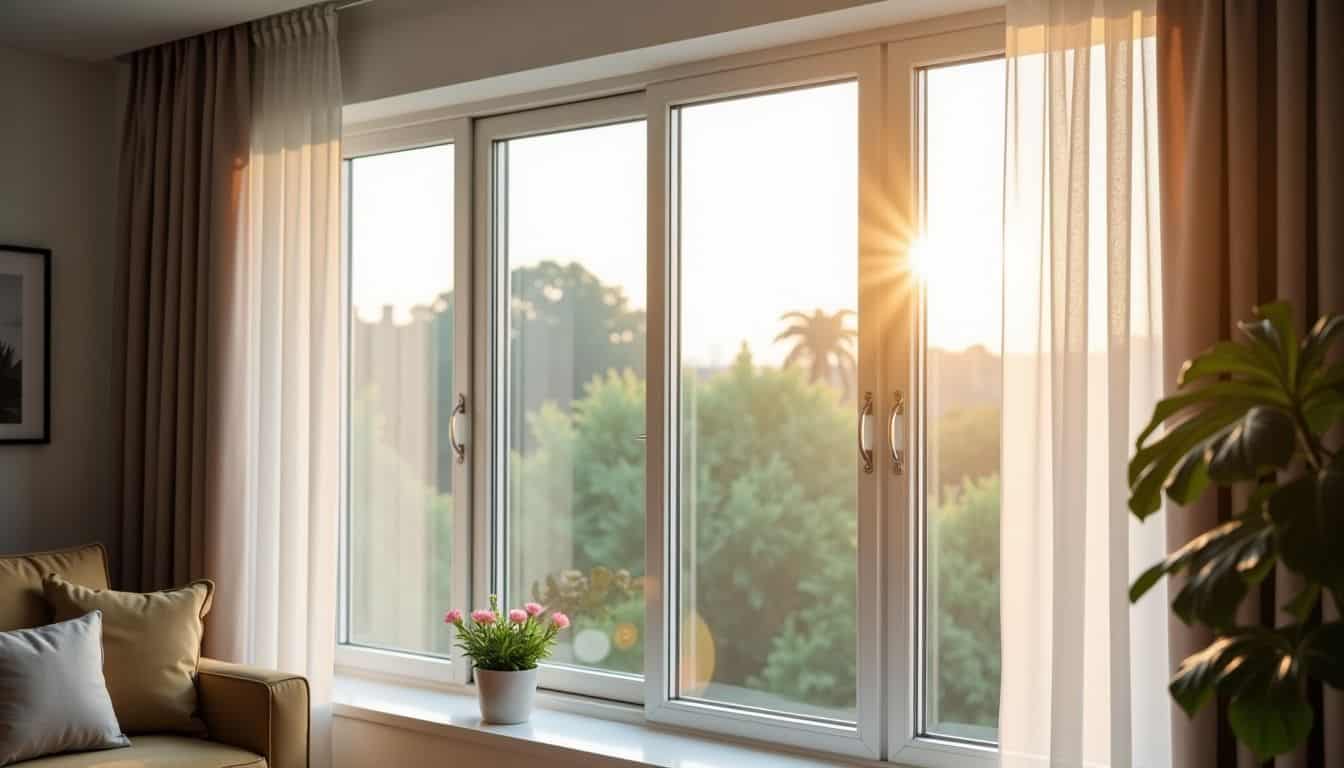
Double-glazed windows stand as your best defense against unwanted noise. These special windows cut outside noise by 50%, making your home feel like a peaceful retreat. My neighbor installed them last summer, and she can’t stop raving about how she no longer hears traffic noise during your 12-year-old’s birthday in the backyard.
The secret lies in their smart design – two glass panes with a gap between them trap and reduce sound waves.
The cost might make you gulp at first – expect to spend around $1,800 or more. But think about the peace you’ll gain. These windows pack special materials like polyvinyl butyral that knock down external noise by up to 40 decibels.
That’s the difference between city traffic and a quiet library! Heavy curtains can boost your window’s sound-blocking power even more. Next up, let’s explore how soundproofing blinds can add an extra layer of quiet to your space.
Use heavy curtains or soundproofing blinds
Heavy curtains pack a powerful punch in your fight against noise. Blackout curtains and velvet drapes work as sound barriers between your peaceful home and the noisy world outside.
These thick fabric options grab sound waves and stop them from bouncing around your room. Sound absorption becomes even better if you layer your window treatments with both curtains and blinds.
Your windows need the right dress code to block unwanted noise. Acoustic curtains pull double duty by stopping both indoor and outdoor sounds from traveling through your space. Many homeowners mix wall tapestries with their window treatments for extra noise control.
The fabric’s thickness matters – the heavier your curtains, the better they’ll work at creating your quiet zone. Smart placement of these sound-blocking heroes can turn any noisy room into your personal sanctuary.
Soundproofing Floors
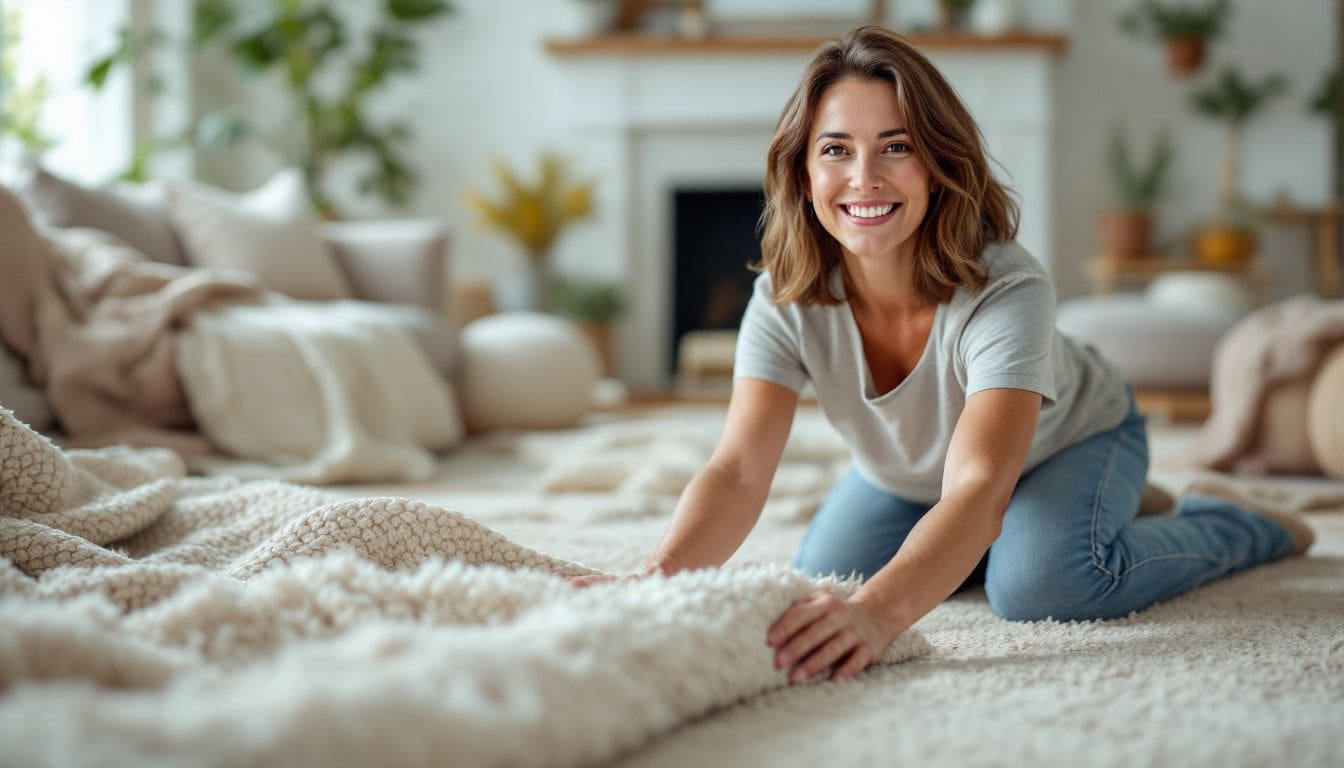
Hard floors can turn your peaceful home into an echo chamber with every footstep. A mix of thick rugs and proper subfloor materials will cut down noise by up to 70% between floors, making your space feel like a cozy anechoic chamber.
Use rugs or carpets with padding
Rugs and carpets with padding pack a powerful punch against noise. A quality carpet setup can slash noise levels by more than 20 decibels – that’s like turning down a loud TV to a soft whisper.
My own living room transformed from an echo chamber to a cozy sanctuary after I laid down thick carpet padding topped with plush wall-to-wall carpeting. The padding acts like a sound sponge, soaking up footsteps and dropped items before they can bounce around the room.
Smart padding choices make all the difference in sound control. Think of padding as your carpet’s secret weapon – it creates an extra barrier between your floor and the noise above.
The best results come from combining high-quality rug pads with your favorite carpet or area rug. I picked a dense foam padding for my bedroom, and now my upstairs neighbors’ footsteps sound more like gentle taps than thunderous stomps.
The padding also makes the carpet feel softer under your feet, so you get comfort and quiet in one package.
Install underfloor soundproofing materials
Underfloor soundproofing materials create a strong barrier against noise from footsteps and movement. Impact Barrier® Flooring Underlayment stands out as a top choice for blocking sound between floors.
The material fits snugly beneath your existing flooring to cut down unwanted noise. PROFLEX™ 90 works great under hardwood floors and stops those annoying cracks from forming.
Your choice of underlayment depends on what type of flooring sits above it. Carpet padding paired with proper underlayment delivers the best results for noise reduction. The costs vary based on the material quality and room size.
Most homeowners pick materials that match their budget and noise-blocking needs. Sound-dampening materials under your floors make a big difference in creating a peaceful home environment.
Rearrange Furniture for Noise Reduction
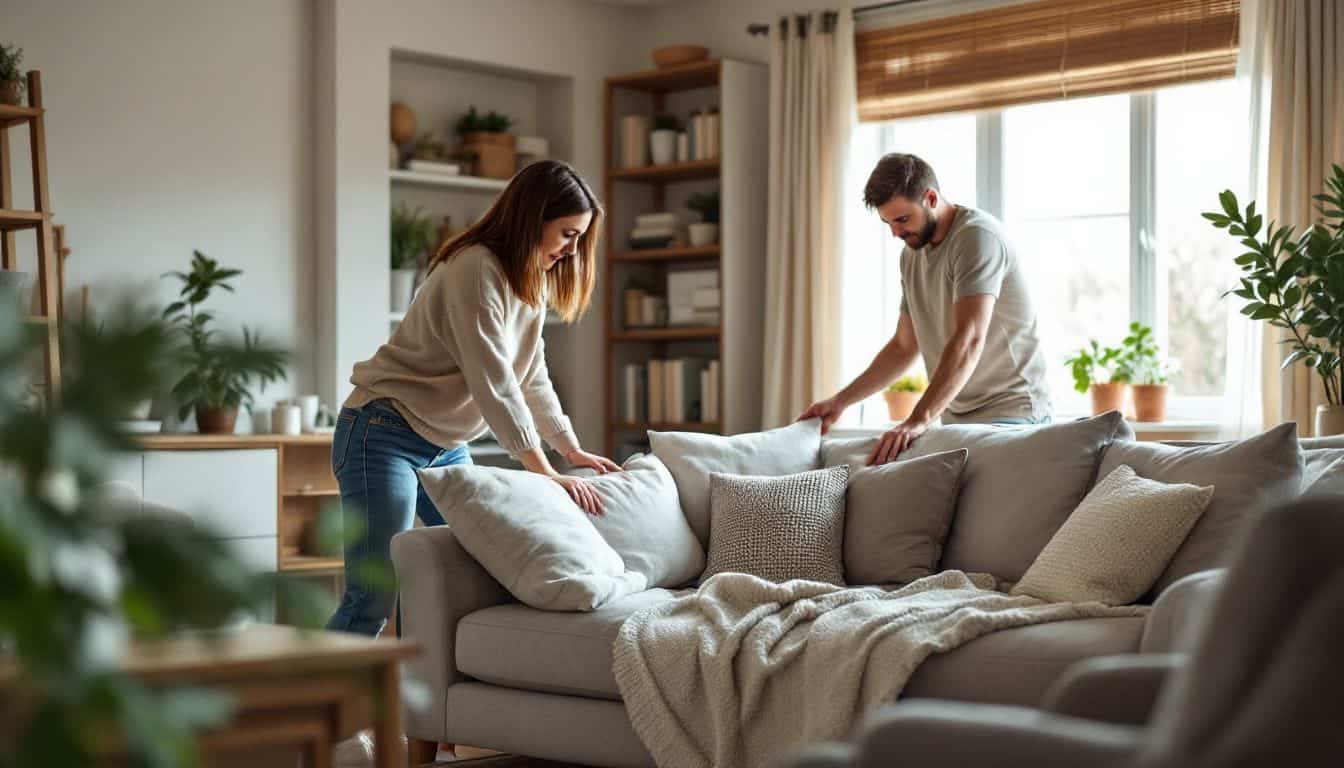
Smart furniture placement plays a huge role in blocking unwanted noise. Your plush sofa acts like a sound barrier, so push it against shared walls to muffle sounds from next door. I’ve found that placing upholstered chairs and bookshelves strategically around the room creates natural sound buffers.
Textured throw pillows on your furniture add an extra layer of sound absorption while keeping your space cozy.
Moving your bedroom furniture away from noisy exterior walls makes a big difference in sleep quality. Place a tall bookshelf against the wall that faces the street – it works like a shield against traffic noise.
Thick curtains paired with wall tapestries help trap sound waves before they bounce around your room. Your carpets and floor mats will catch noise that tries to travel up from lower floors.
Next up, let’s explore how white noise machines can mask those pesky sounds that slip through.
Use White Noise Machines or Sound Masking Devices

White noise machines offer a simple fix for unwanted sounds in your home. These devices create a steady background sound that masks disruptive noises and helps you sleep better. Studies show they can cut down the time it takes to fall asleep by 40%.
Parents love these machines because they help babies and young children sleep through the night.
Your white noise machine needs the right setup to work well. Place it between you and the noise source for the best results. Keep the volume at a comfortable level – not too loud or too soft.
You can pick from different sound types like pink noise or blue noise to find what works for you. The sound masking feature creates a peaceful bubble around your space, perfect for bedrooms or home offices where you need extra quiet.
People Also Ask
What’s the fastest way to soundproof my house?
Start with double glazing or secondary glazing for windows. Add acoustic foam to walls and gypsum boards for basic sound damping. These quick fixes can cut noise right away.
How much does home soundproofing cost?
Costs vary widely. A credit card might cover basic acoustic tiles and floor coverings. For bigger jobs like dropped ceilings or crawlspace fixes, you might need a loan. Check interest rates with financial conduct authority approved lenders.
Can poor soundproofing affect my health?
Yes! Bad sound-proof conditions can lead to hearing problems, hearing loss, and even depression and loneliness. Good noise insulation helps create a peaceful home environment.
What’s the best way to soundproof a ceiling?
Install a false ceiling or dropped ceiling with acoustic tiles. Add proper framing and caulking to reduce sound transmission class ratings. This helps cut down reverberation from upstairs noise.
Do I need professional help for soundproofing?
While you can DIY some parts like adding polyurethane seals or acoustic foam, bigger jobs need pros. They know how to handle complex installations and check sound transmission class ratings properly.
How do I know if my soundproofing works?
Use sound meters to test before and after. Watch for reduced reverberation and noise levels. Many companies use Google Analytics-style tracking to measure sound reduction. Remember, cookies aren’t just for websites – they’re also gaps that let sound through!
References
https://thepoldergroup.com/article/soundproofing-guide-for-peaceful-home
https://thesoundproofwindows.co.uk/noise-reduction-resources/how-to-soundproof-doors-guide/
https://yournewdoor.com/the-ultimate-guide-how-to-soundproof-a-door/ (2024-05-23)
https://soundproofingguide.com/soundproof-door/
https://www.instructables.com/Build-a-Soundproof-Wall/
https://www.fixr.com/articles/how-to-soundproof-windows (2024-07-11)
https://www.thespruce.com/how-to-soundproof-windows-7483926
https://www.acousticalsurfaces.com/blog/blocking-sound/how-to-use-a-white-noise-machine-for-privacy/ (2023-05-24)
